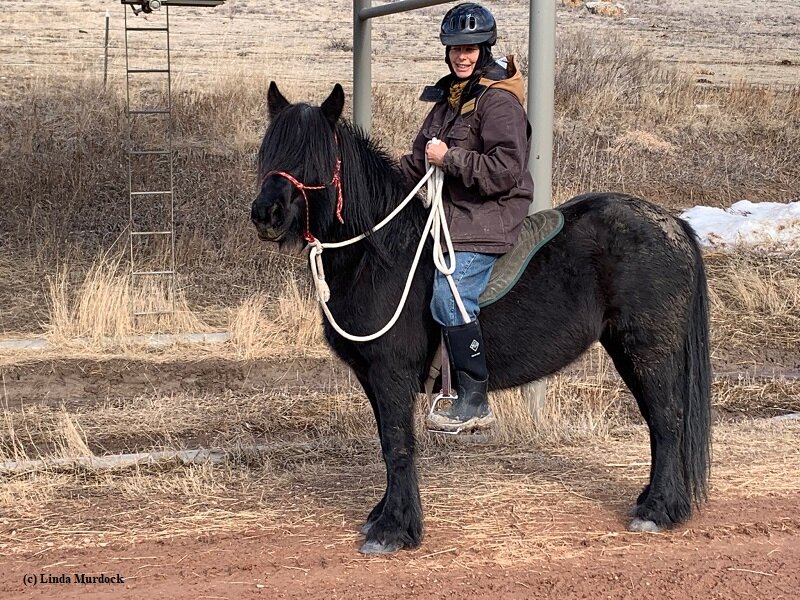Saddle Quest
I love my bareback pad but it’s time to move to a saddle.
When winter began last year, I set myself a goal of riding to the summit of Parker Peak, the highest point in Fall River County where I now live. It would be a ride from home of about 3 miles one way with an elevation gain of about 800 feet. What I didn’t realize when I set that goal is that there would be interim goals to accomplish first. One of those is buying a saddle.
During my first decade with ponies, I would more often work them in harness than ride. For the occasional short rides that I did do, I had a bareback pad with stirrups that worked well. In hindsight I realize that many of those rides didn’t have severe elevation changes in them. In my new life in South Dakota, though, where my house sits in a valley and so much of interest is ‘up,’ elevation change is to be part of my riding.
Early in my teamster career I learned to look at hair patterns after removing harness to assess whether my pony had experienced any discomfort from harness fit or wear while working. I naturally began doing the same whenever I removed pack saddles or my bareback pad. After riding a few hills here, it became clear from those post-ride evaluations that having a saddle would be necessary for my pony’s comfort and for mine.
It didn’t take long into my Fell Pony career to learn that fitting a saddle to a Fell Pony is a non-trivial exercise. I’ve read lots of threads over the years on various social media, which is how I learned that saddle fit is one part pony, one part person, and one part type of riding. After I learned this, I wasn’t surprised that there was rarely consensus about the ‘right’ saddle for a Fell because there were so many different permutations of how a saddle was fit to a person/pony partnership. My bareback pad seemed like a good solution for a long time.
In the meantime, I learned more and more about proper harness fit. Numerous articles with my colleague Doc Hammill resulted in a book on harness. My take-away from that project was that to buy a saddle for my ponies required taking equal care and concern as we had documented in our harness book. Again, my bareback pad seemed like a reasonable compromise.
Now, though, I’m ready to invest the time to find a saddle that works for us in our new situation. The bareback pad’s compromises have become problems that must be addressed to accomplish my goals with my ponies. Three areas in particular are problematic with my bareback pad. First, with my Fell Pony mount’s well-laid back shoulder, the natural girth groove is forward of the withers and the construction of my bareback pad and its girth pull the pad forward onto the withers, especially going downhill. I can sit back further to correct this on flat ground but downhill travel is still troublesome. And then the stirrup leather rings are forward of the girth, so posting a trot, for instance, puts downward pressure on the spinous processes of the withers which is completely unacceptable. Finally, the stirrup position is compromising my posture when riding, throwing my legs forward. Poor posture on my part ultimately adversely impacts my mount.
Life works in mysterious ways. When I finally became ready to move on from my bareback pad, some consensus emerged amongst like-minded equestrians regarding saddles for my situation. I am now engaged in saddle fitting processes with three different saddlers, and I’m learning a lot. The biggest unknown at the moment is how many saddles I will end up with when I emerge at the other end of this journey!
© Jenifer Morrissey, 2020
My book Harness Lessons with Doc Hammill and Friends is available internationally by clicking here or on the book cover.

